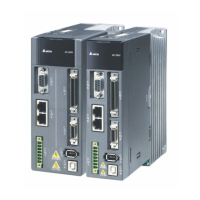
Do you have a question about the Delta ASDA A2-E and is the answer not in the manual?
| Brand | Delta |
|---|---|
| Model | ASDA A2-E |
| Category | Servo Drives |
| Language | English |
Details the physical layer, connectors, topology, baud rate, and frame data length for EtherCAT.
Illustrates the physical interface of the servo drive, labeling ports and indicators.
Explains the patterns and meanings of the RJ45 LED indicators (ERR, RUN, L/A).
Explains how the EtherCAT topology is defined by the host controller.
Provides pin diagrams for the CN1 connector for I/O signals and encoder.
Details the signals, pin numbers, and functions for the CN1 connector.
Shows pin assignments and connector types for CN2, used for serial communication.
Details the CN5 connector for connecting linear scales or encoders for full-closed loop operation.
Provides pinout for the CN6 EtherCAT terminal, including TX/RX signals.
Details the CN7 connector for extension digital inputs and its pin assignments.
Explains the CN-STO connector for Safe Torque Off (STO) function, including pinout.
Shows the wiring diagram for the STO function using an external safety relay.
Illustrates the wiring for disabling the STO function.
Provides mechanical dimensions and weight for 220V series servo drives.
Details dimensions and weights for 100W/200W/400W and 750W/1kW/1.5kW models.
Provides mechanical dimensions and weight for 400W to 1.5kW 400V series drives.
Instructs on setting parameter P1-01 for EtherCAT and restarting the drive.
Outlines steps for configuring the EtherCAT system using TwinCAT software.
Introduces Free Run (Asynchronous) and DC-Synchronous modes for Delta servo.
Introduces Free Run (Asynchronous) and DC-Synchronous modes for Delta servo.
Guides on selecting DC-Synchronous or Free Run mode via the DC tab in TwinCAT.
Explains how to set cycle ticks for synchronization in TwinCAT.
Introduces PDO mapping objects and default mappings for cyclic data exchange.
Lists the default PDO mappings for 1st, 2nd, and 3rd PDOs.
Provides a step-by-step procedure for re-defining PDO mappings.
Explains how to configure PDO mapping content within TwinCAT.
Details the state transition commands (IP, PS, SO, PI, SI, OI, SP, OP, OS).
Addresses issues with TwinCAT not detecting EtherCAT devices.
Solves the "Unknown device type found" error in TwinCAT scanning.
Troubleshoots the EtherCAT state machine showing only INIT.
Guides on resolving "following error" in TwinCAT by setting calculation to Extern.
Explains AL185 alarm related to EtherCAT cable disconnection.
Troubleshoots AL180 alarm caused by losing consecutive PDOs.
Addresses AL3E1 alarm in CANopen modes from losing PDOs.
Troubleshoots AL3E3 alarm in CANopen modes from losing PDOs.
Explains how the drive receives position commands and controls the motor.
Describes the function of Profile Position Mode where drive receives position commands.
Lists the steps to set up and operate the Profile Position Mode.
Details advanced settings for Profile Position Mode, including following error.
Lists all relevant object indices, names, types, and attributes for Profile Position Mode.
Explains how the drive interpolates position based on received PDOs.
Describes the drive's interpolation of position using PDOs and control words.
Lists steps for setting up and operating Interpolation Position Mode.
Lists relevant object indices for Interpolation Position Mode.
Explains how the host plans paths and sends PDOs for synchronized position control.
Describes CSP mode where host plans paths and sends PDOs for synchronized control.
Illustrates the block diagram for Cyclic Synchronous Position Mode.
Lists steps for setting up and operating Cyclic Synchronous Position Mode.
Lists relevant object indices for Cyclic Synchronous Position Mode.
Explains how the drive finds the home position, specifying speed and method.
Describes the Homing Mode function for finding the home position.
Lists steps for setting up and operating Homing Mode.
Lists relevant object indices for Homing Mode.
Explains how the drive receives velocity commands and plans acceleration/deceleration.
Describes the Profile Velocity Mode for receiving velocity commands.
Lists steps for setting up and operating Profile Velocity Mode.
Details advanced settings for Profile Velocity Mode, including velocity monitor.
Lists relevant object indices for Profile Velocity Mode.
Explains how the host plans paths and sends PDOs for synchronized velocity control.
Describes CSV mode where host plans paths and sends PDOs for synchronized velocity.
Illustrates the block diagram for Cyclic Synchronous Velocity Mode.
Lists steps for setting up and operating Cyclic Synchronous Velocity Mode.
Lists relevant object indices for Cyclic Synchronous Velocity Mode.
Explains how the drive receives torque commands and plans torque slope.
Describes the Profile Torque Mode for receiving torque commands.
Lists steps for setting up and operating Profile Torque Mode.
Details advanced settings for Profile Torque Mode, including torque demand value.
Lists relevant object indices for Profile Torque Mode.
Explains how the host plans paths and sends PDOs for synchronized torque control.
Describes CST mode where host plans paths and sends PDOs for synchronized torque.
Illustrates the block diagram for Cyclic Synchronous Torque Mode.
Lists steps for setting up and operating Cyclic Synchronous Torque Mode.
Lists relevant object indices for Cyclic Synchronous Torque Mode.
Explains how the drive handles limit position sensors and switches to Quick-Stop.
Describes the drive's behavior when reaching positive or negative limit sensors.
Lists steps for handling limit position alarms and enabling motion again.
Explains the Touch Probe function for high-speed performance in measuring applications.
Describes the Touch Probe function enabled via DI or encoder for latching positions.
Defines the bit meanings for the Touch Probe status object (60B8h).
Defines the bit meanings for the Touch Probe status object (60B9h).
Lists relevant object indices for the Touch Probe function.
Explains object types (VAR, ARRAY, RECORD) and data types.
Defines VAR, ARRAY, and RECORD object types with their characteristics.
Refers to CANopen Standard 301 for data type definitions.
Lists objects within Group 1000h, including device type and error register.
Lists objects within Group 6000h, covering control, status, and operation modes.
Details the INDEX, Name, Object Code, Data Type, Access, and Default Value for Device Type.
Details the Error Register object, including its mapping and default value.
Details the RxPDO assignment object, including sub-index definitions.
Details the TxPDO assignment object, including sub-index definitions.
Details the Controlword object, its bit definition, and relation to the state machine.
Details the Statusword object, its bit definition, and relation to operation modes.
Details the Modes of operation object, listing supported modes.
Details the Target position object.
Details the Homing method object and illustrates different homing methods.
Details the Following error actual value object.
Details the Digital inputs object, showing input states.
Details the Supported drive modes object.
Details the EtherCAT Synchronization Setting parameter.
Details the Electronic Gear parameter.
Details the CN-STO connector for Safe Torque Off (STO) function, including pinout.
Shows wiring diagram for STO with safety relay.
Shows wiring diagram for disabling STO function.
Details the Fault Rate of Safety Function and the Theorem of Safety Function.
Explains parameter P2-93 for STO FDBK status and latching behavior.
Lists STO alarms (AL500, AL501, AL502, AL503) with descriptions and actions.
Lists EtherCAT communication fault messages, their descriptions, and clearing methods.
Provides a table of error codes, their descriptions, and corresponding 32-bit error codes.
Lists SDO error message abort codes and their descriptions.
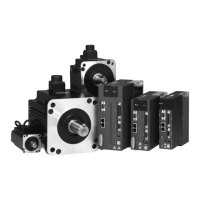
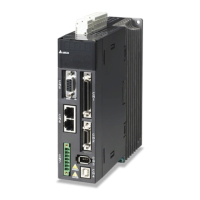
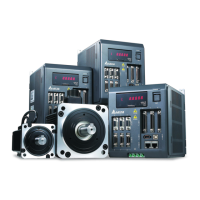
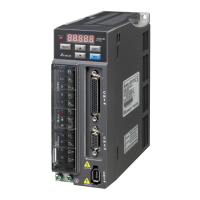
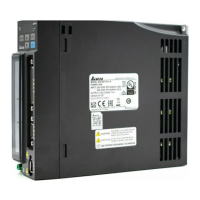

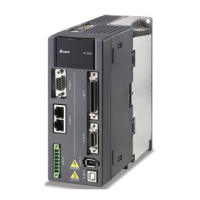





